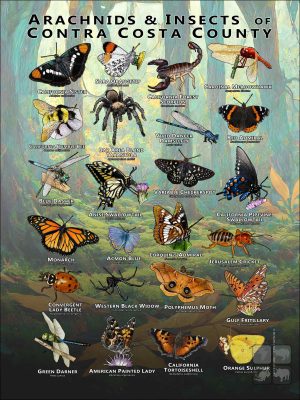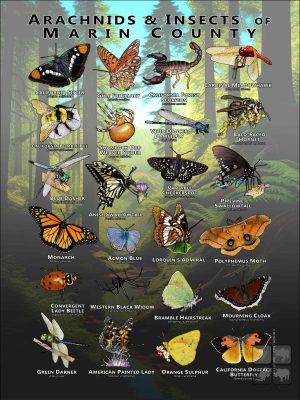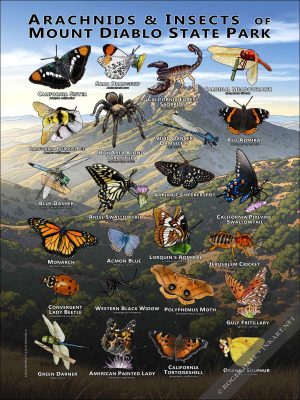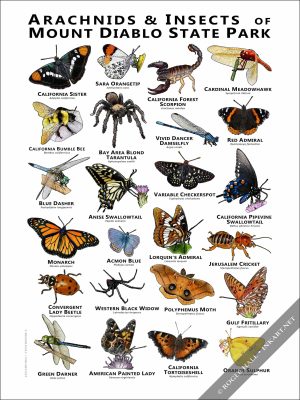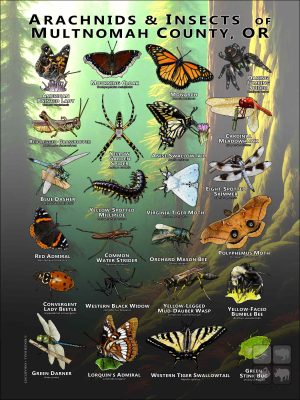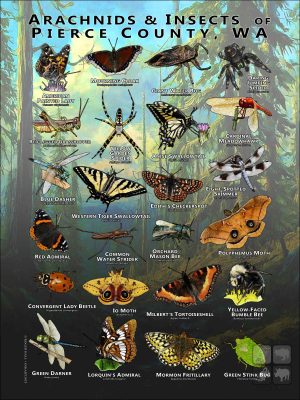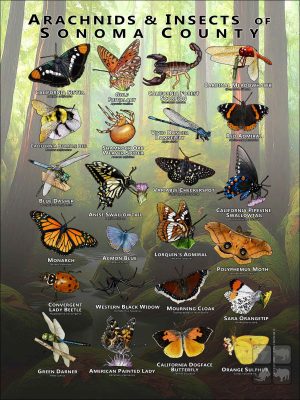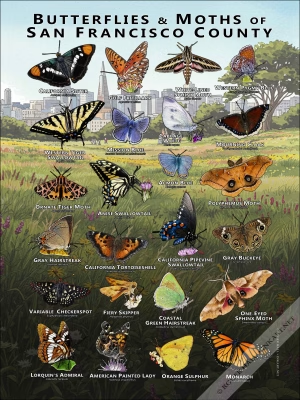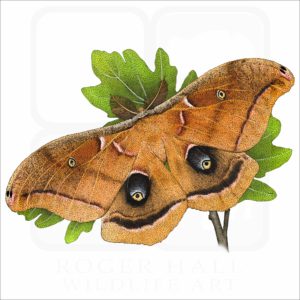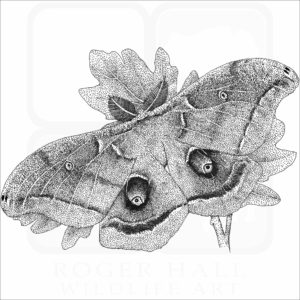Arachnids & Insects of Contra Costa County Poster Print
Contra Costa County is located in the East Bay of the San Francisco Bay Area, and was one of the original 27 counties established in California in 1850. It is the ninth most populous county in the state, and is made up of 19 cities and many established communities in the unincorporated area. The county seat is Martinez. The county’s name means “opposite coast” because of its location opposite San Francisco, in an easterly direction, on San Francisco Bay.
Select options
This product has multiple variants. The options may be chosen on the product page
Arachnids & Insects of Marin County Poster Print
Marin County is in Northern California and is one of the nine counties in the San Francisco Bay Area.
Select options
This product has multiple variants. The options may be chosen on the product page
Arachnids & Insects of Mendocino County Poster Print
Mendocino County is in Northern California, north of San Francisco Bay. In the area are several different natural environments, including grassland, oak woodland, redwood forest, chaparral, riparian gullies, streams, coastal areas and wetlands. These enviroments provide excellent habitat for many different species of arachnids & insects.
Select options
This product has multiple variants. The options may be chosen on the product page
Arachnids & Insects of Mount Diablo State Park Poster Print
Select options
This product has multiple variants. The options may be chosen on the product page
Arachnids & Insects of Multnomah County, Oregon Poster Print
Select options
This product has multiple variants. The options may be chosen on the product page
Arachnids & Insects of Napa County Poster Print
Napa county in Northern California has several different natural environments, including grassland, oak woodland, redwood forest, chaparral, riparian gullies, streams, and wetlands. These areas provide excellent habitat for many different species of arachnids & insects.
Select options
This product has multiple variants. The options may be chosen on the product page
Arachnids & Insects of Pierce County, Washington Poster Print
Select options
This product has multiple variants. The options may be chosen on the product page
Arachnids & Insects of Shelby County, TN Poster Print
Species included:
AMERICAN PAINTED LADY (Vanessa virginiensis) • BLACK SWALLOWTAIL (Papilio polyxenes) • BLUE DASHER (Pachydiplax longipennis) • CAROLINA MANTIS (Stagmomantis carolina) • COMMON EASTERN BUMBLEBEE (Bombus impatiens) • CONVERGENT LADY BEETLE (Hippodamia convergens) • DARING JUMPING SPIDER (Phidippus audax) • EASTERN BARK CENTIPEDE (Hemiscolopendra marginata) • EASTERN TAILED-BLUE (Cupido comyntas) • EASTERN TIGER SWALLOWTAIL (Papilio glaucus) • GIANT LEAF-FOOTED BUG (Acanthocephala declivis) • GREEN DARNER (Anax junius) • GULF FRITILLARY (Agraulis vanillae) • HACKBERRY EMPEROR (Asterocampa celtis) • MONARCH (Danaus plexippus) • LARGE MILKWEED BUG (Oncopeltus fasciatus) • NORTHERN PAPER WASP (Polistes fuscatus) • PIPEVINE SWALLOWTAIL (Papilio zelicaon) • POLYPHEMUS MOTH (Stenopelmatus fuscus) • RED ADMIRAL (Ranitomeya fantastica) • RED VELVET ANT (Dasymutilla occidentalis) • SPINY-BACKED ORB WEAVER SPIDER (Gasteracantha cancriformis) • TWO-SPOTTED LONGHORN BEE (Melissodes bimaculatus) • YELLOW GARDEN SPIDER (Argiope aurantia)
FREE SHIPPING IN THE US
Select options
This product has multiple variants. The options may be chosen on the product page
Arachnids & Insects of Sonoma County Poster Print
Sonoma County is in Northern California, north of San Francisco Bay, and is the northernmost of the nine counties in the San Francisco Bay Area. It's bordered by Marin County to the south, Mendocino County to the north, Lake County to the northeast, and Napa County to the east.
Select options
This product has multiple variants. The options may be chosen on the product page
Butterflies and Moths of San Francisco County Poster Print
San Francisco County is in Northern California and is one of the nine counties in the San Francisco Bay Area. It is home to many different species of Lepidoptera.
Select options
This product has multiple variants. The options may be chosen on the product page
Butterflies and Moths of San Mateo County Poster Print
San Mateo County is in Northern California and is one of the nine counties in the San Francisco Bay Area. It is home to many different species of Lepidoptera.
Select options
This product has multiple variants. The options may be chosen on the product page
Polyphemus Moth – Signed Fine Art Print
Information about the Polyphemus Moth:
The Polyphemus Moth is a is a North American member of the family Saturniidae, the giant silk moths. It has an average wingspan of about 6 inches (15 cm). The most notable feature of the moth is its large, purplish eyespots on its two hindwings. The eye spots are where it gets its name – from the Greek myth of the Cyclops Polyphemus. The species is widespread in continental North America, with local populations found throughout subarctic Canada and the United States. Differentiating between sexes of this species is easy. The most obvious difference is the plumose antennae. Males will have very bushy antennae while females will have moderately less bushy antennae. The male's bushy antennae are used to detect pheromones released by unmated females. Another difference is that the females will be slightly larger in the abdomen due to carrying eggs. There is a surprising amount of variation within this species. Color patterns can range from a reddish-cinnamon to a dark brown but are almost always a shade of brown. The poster is printed on matte, museum-quality paper with Giclée printing quality: • Paper thickness: 10.3 mil • Paper weight: 5.6 oz/y² (192 g/m²) • Opacity: 94% Buy a Digital Download
Select options
This product has multiple variants. The options may be chosen on the product page

